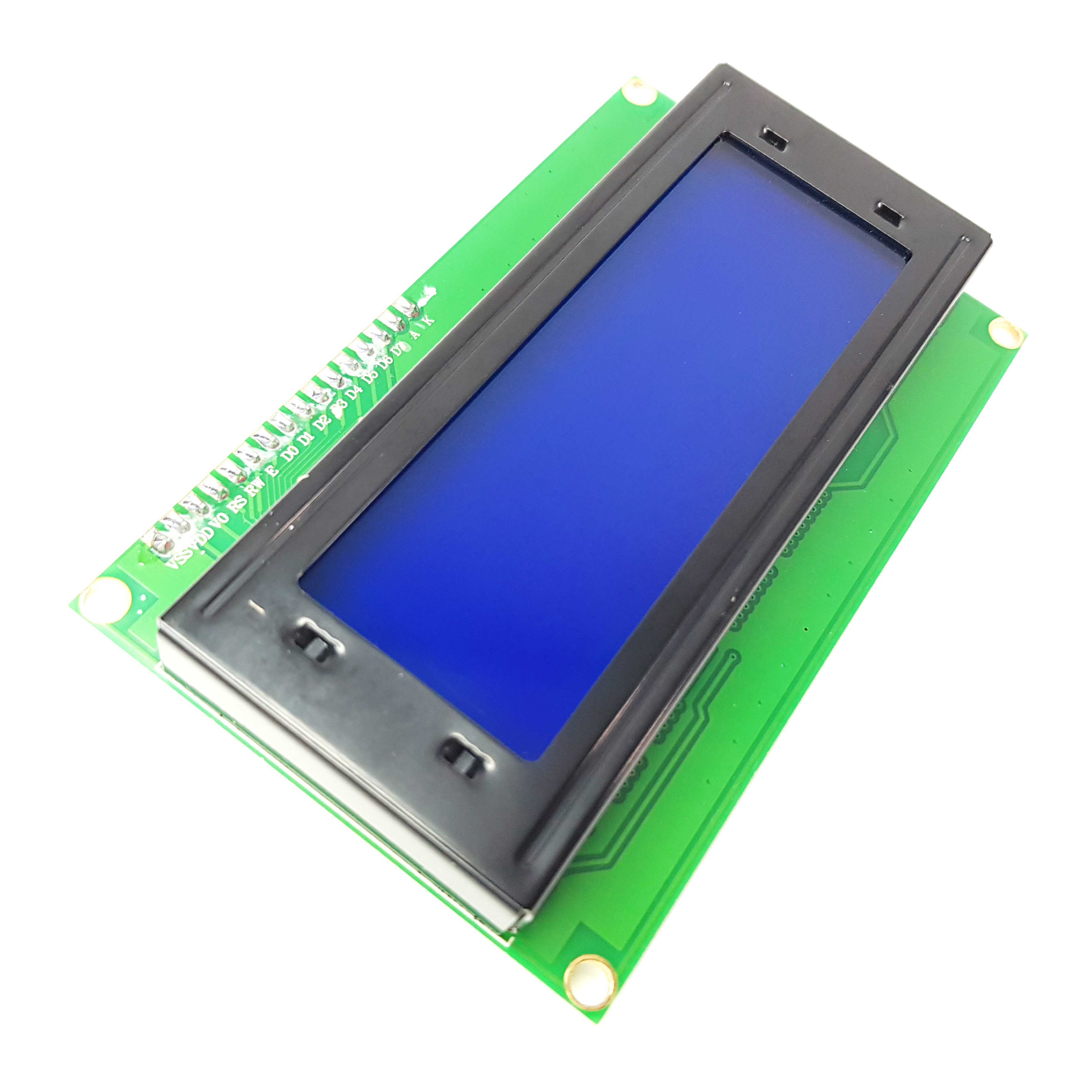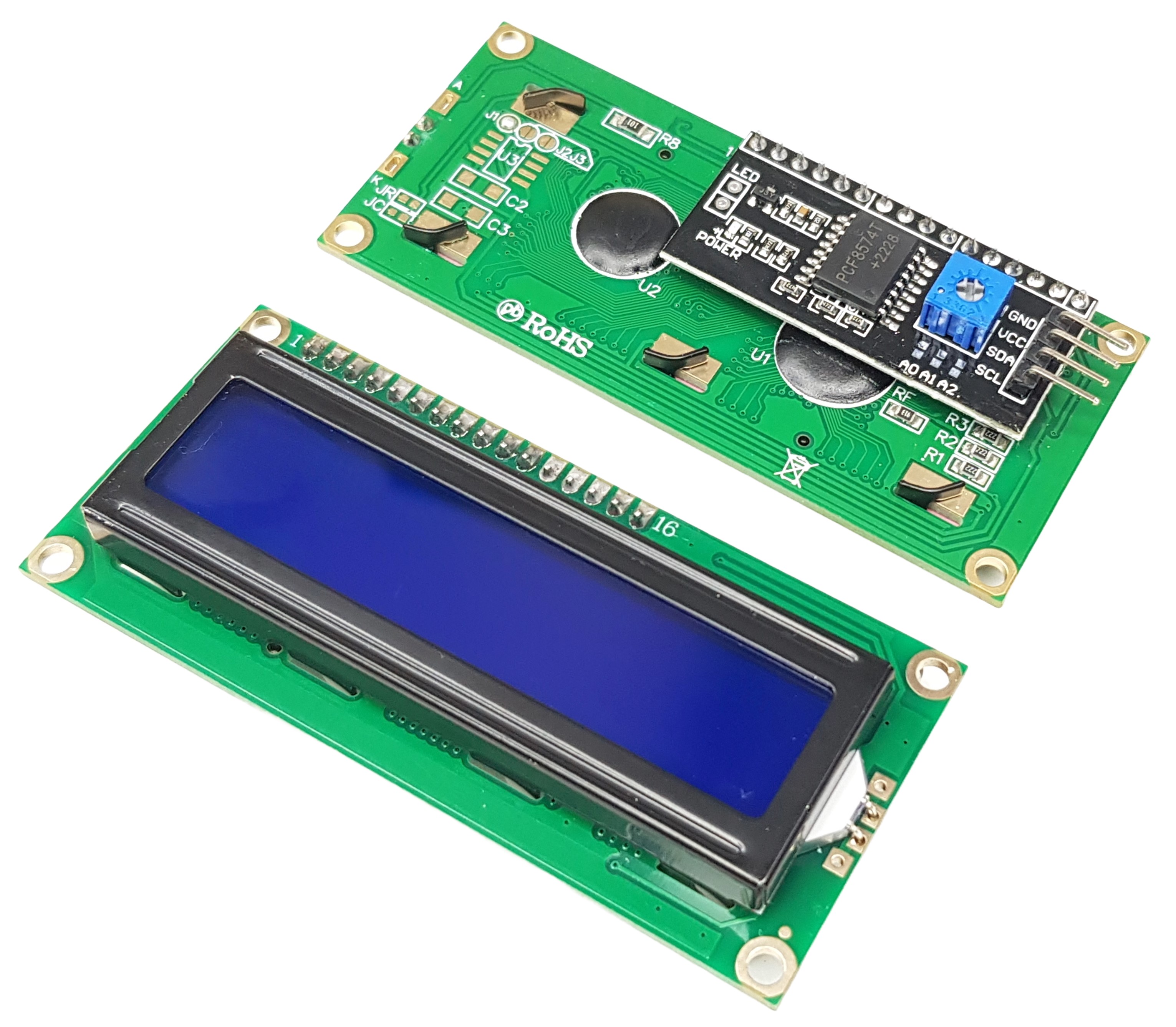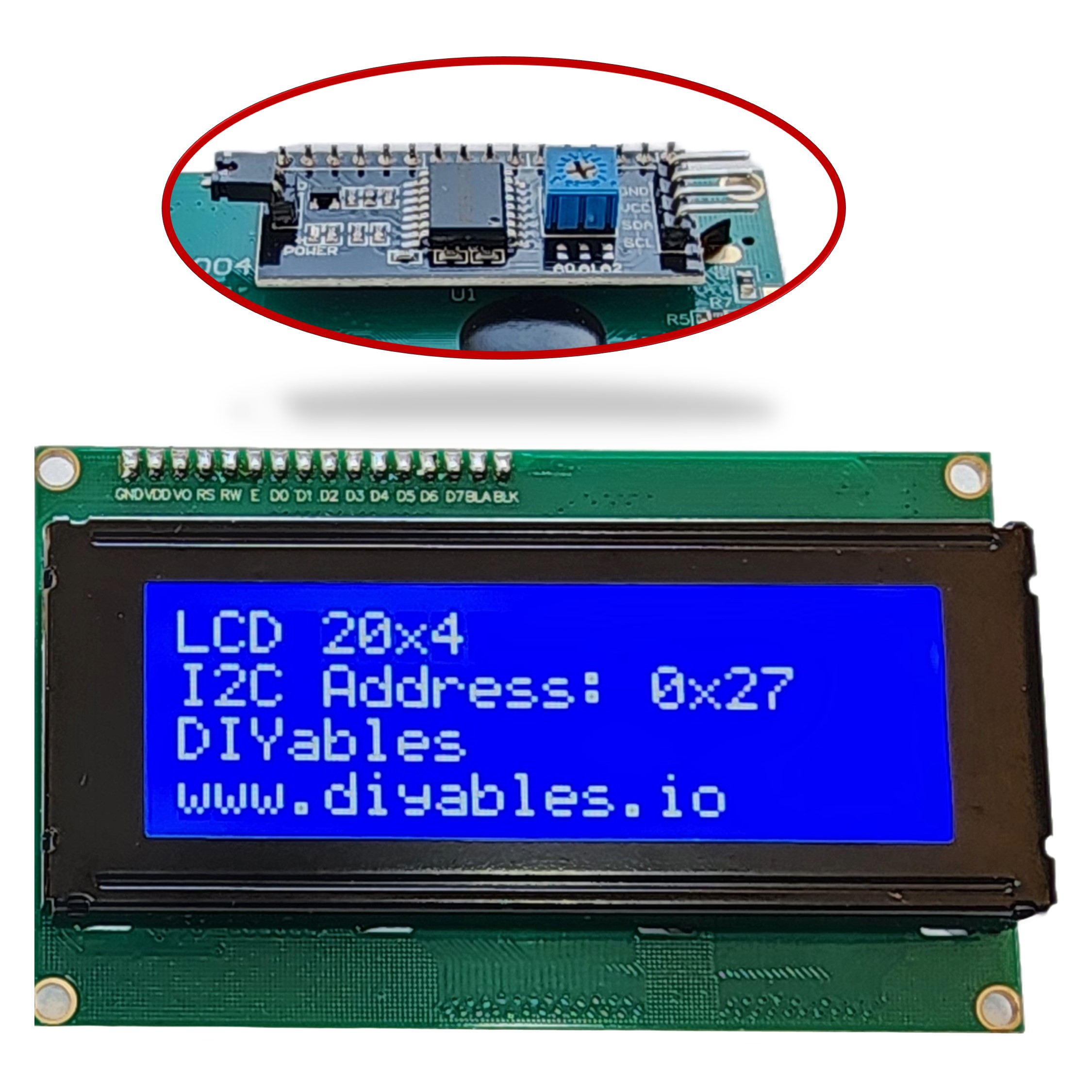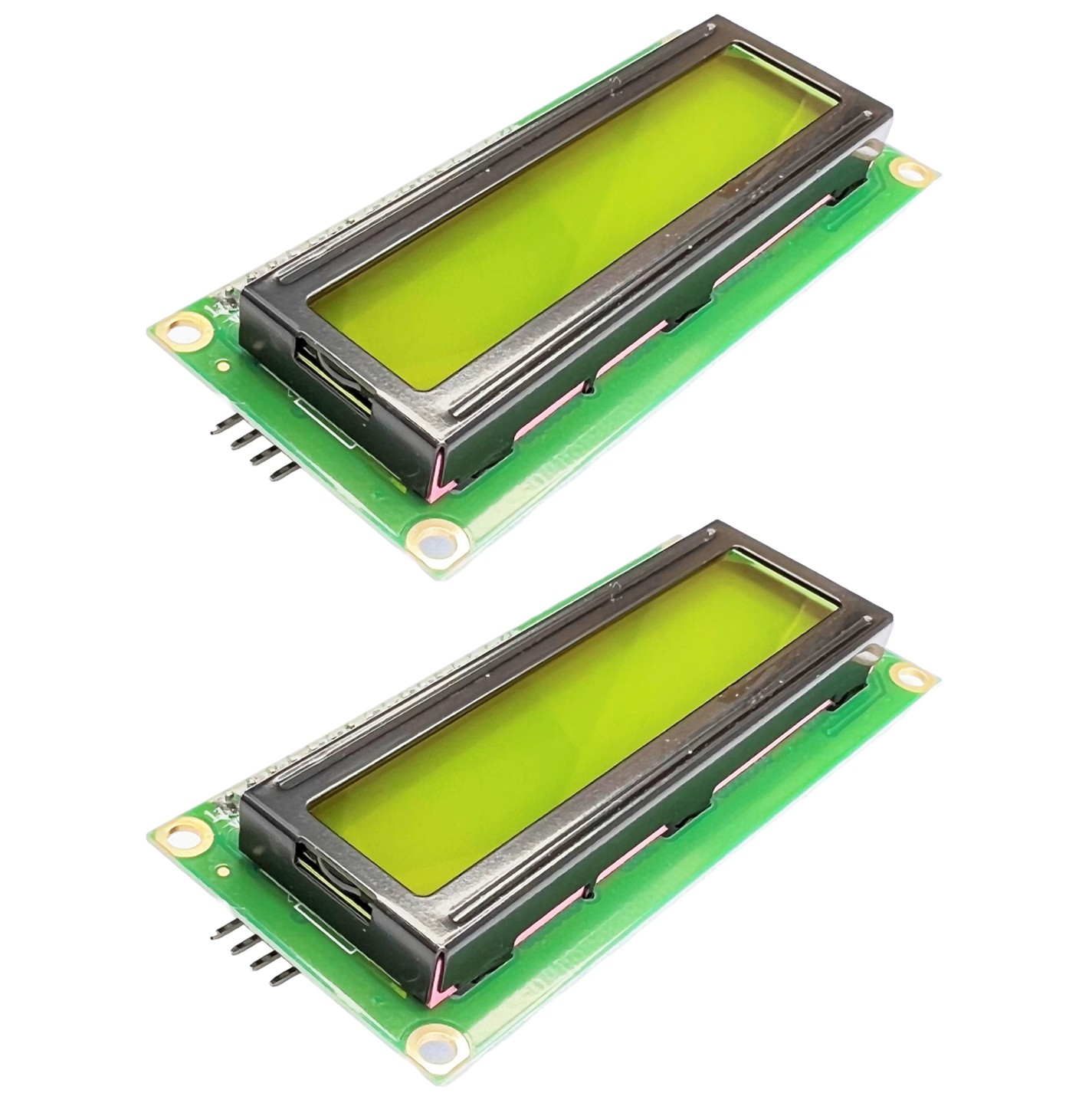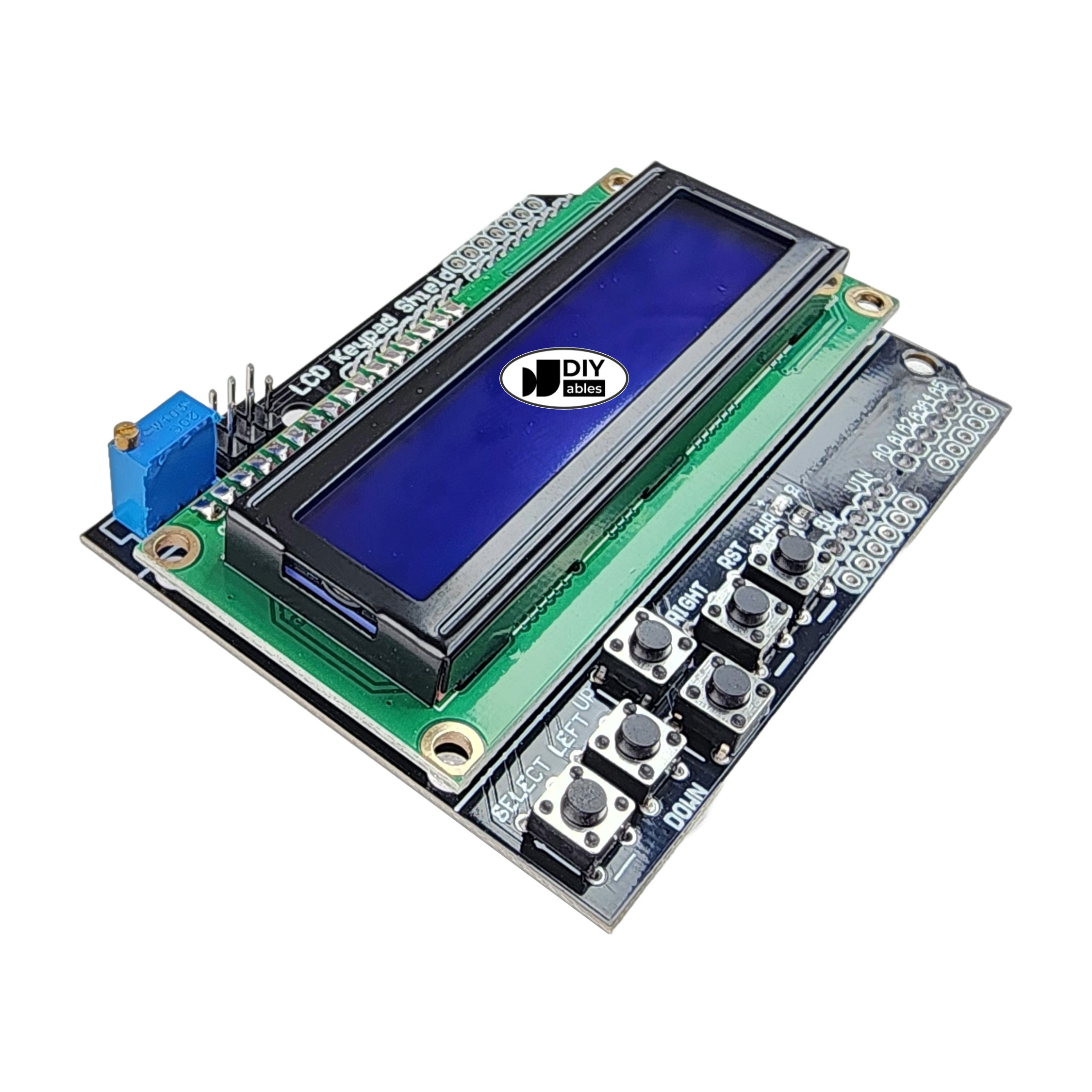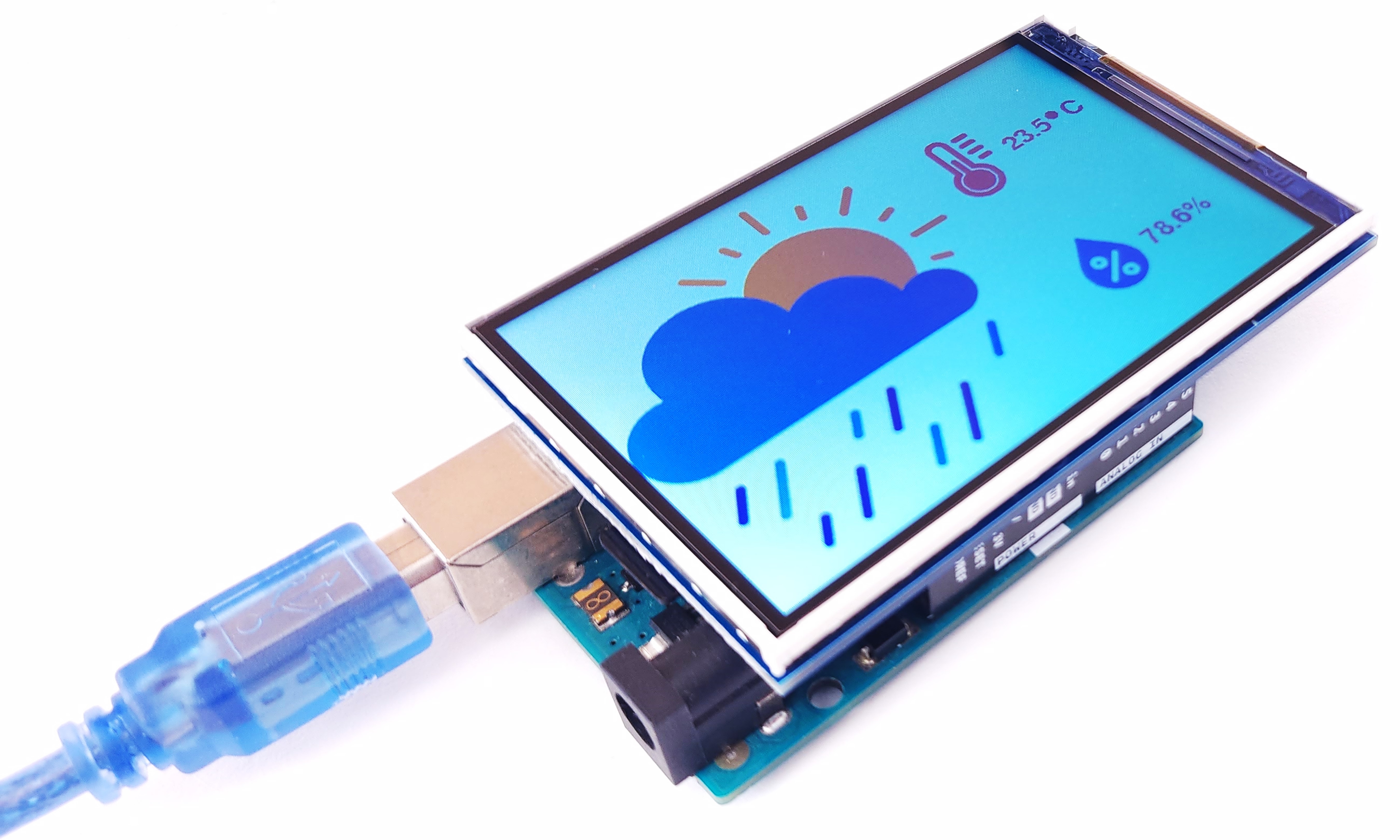DIYables LCD I2C 16x2
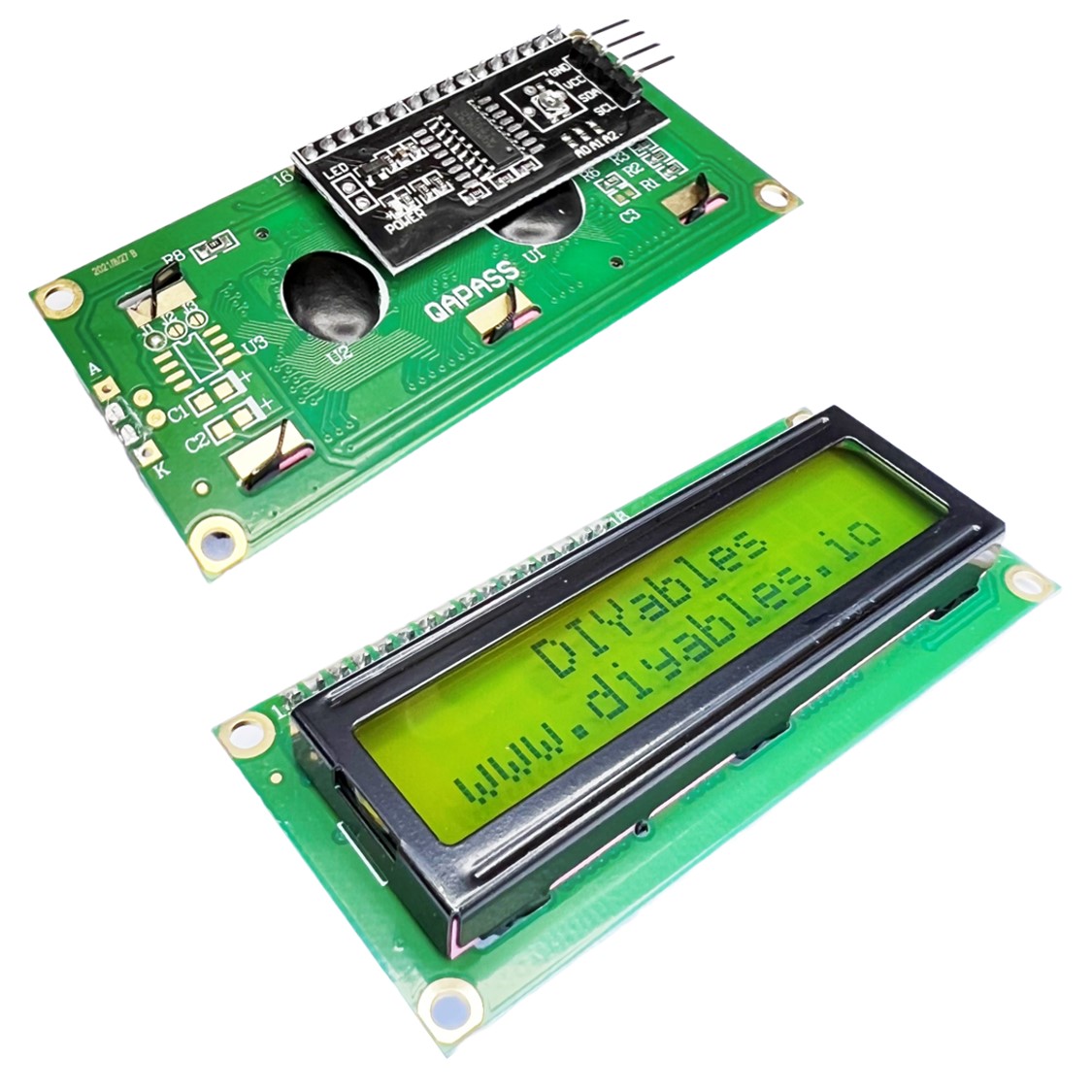 Click to zoom
Click to zoom

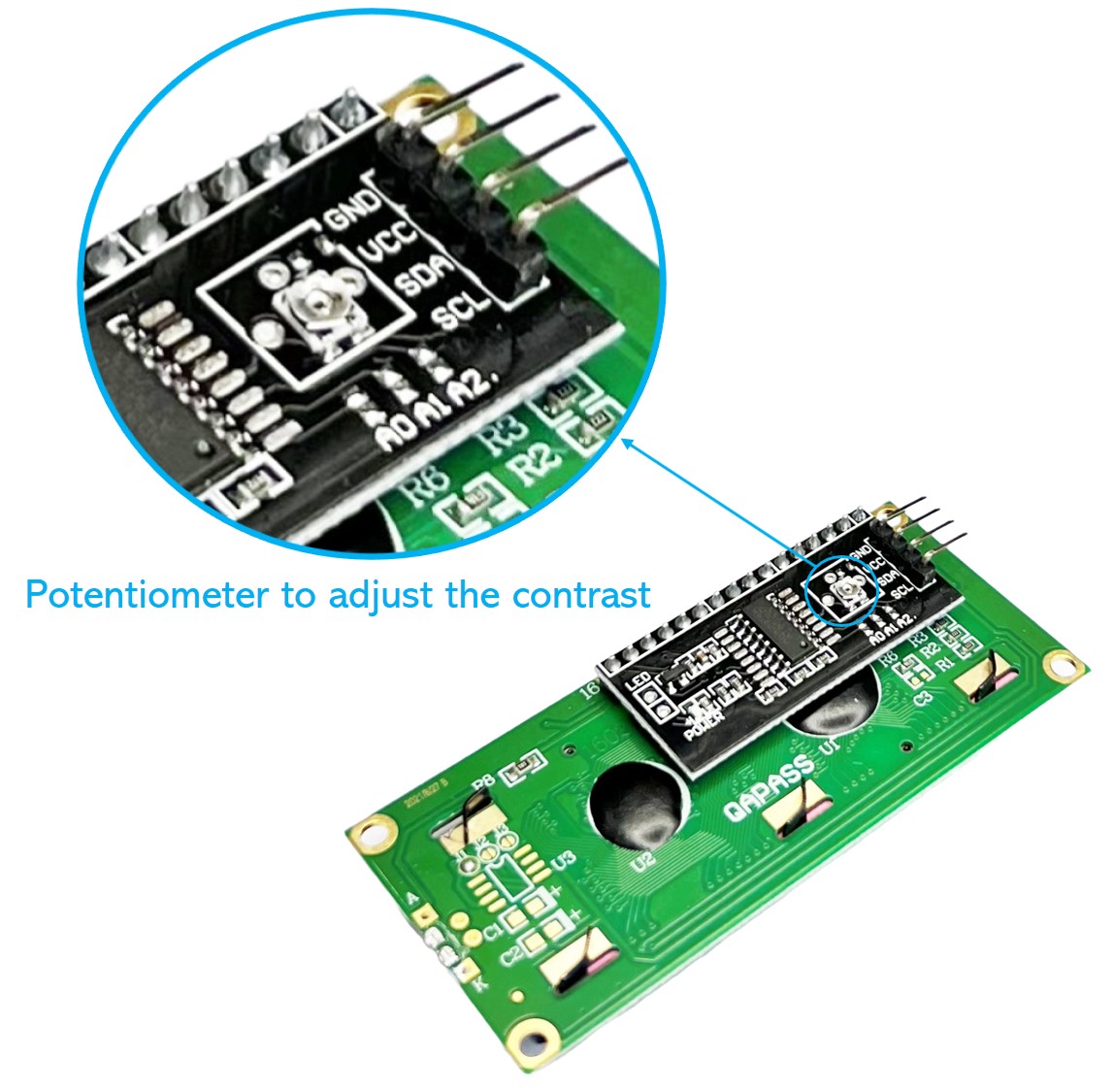

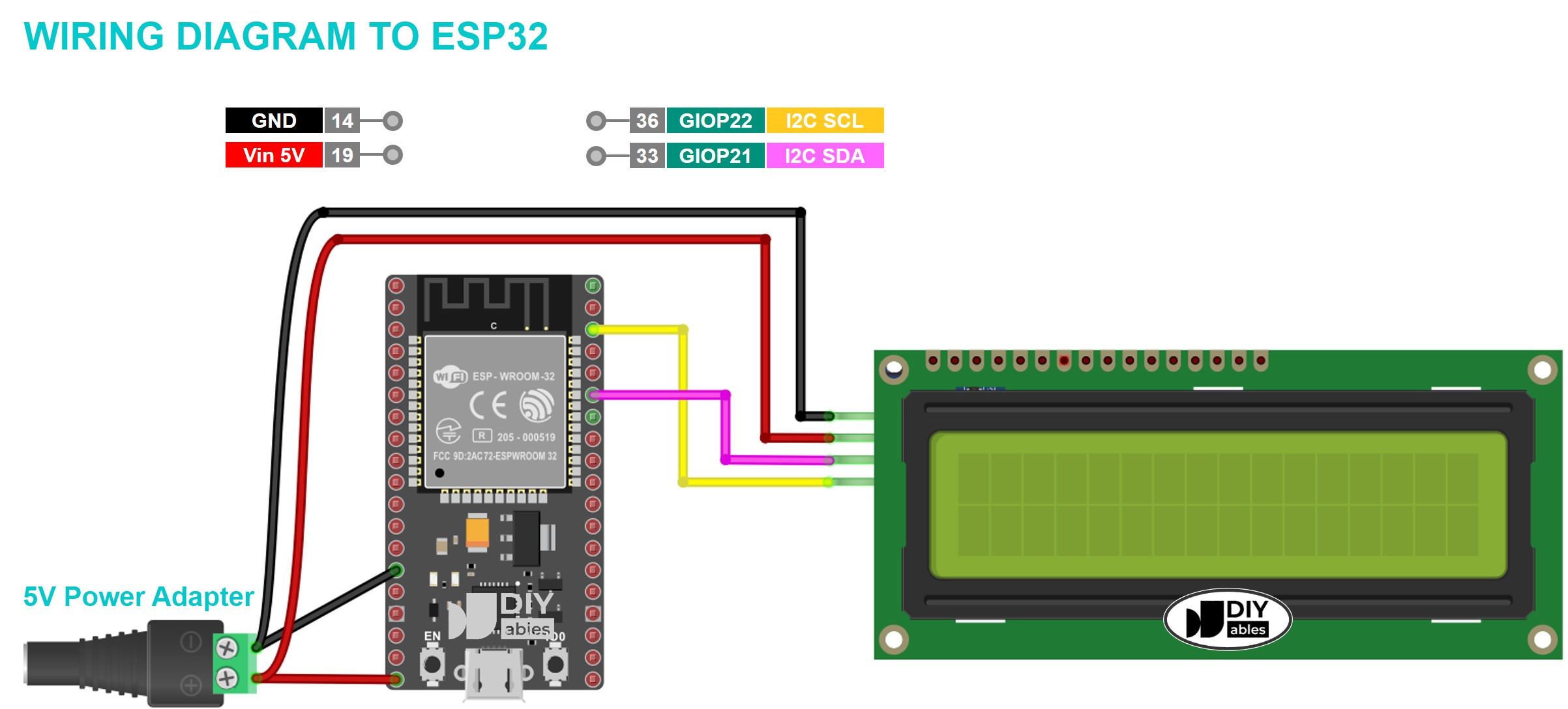
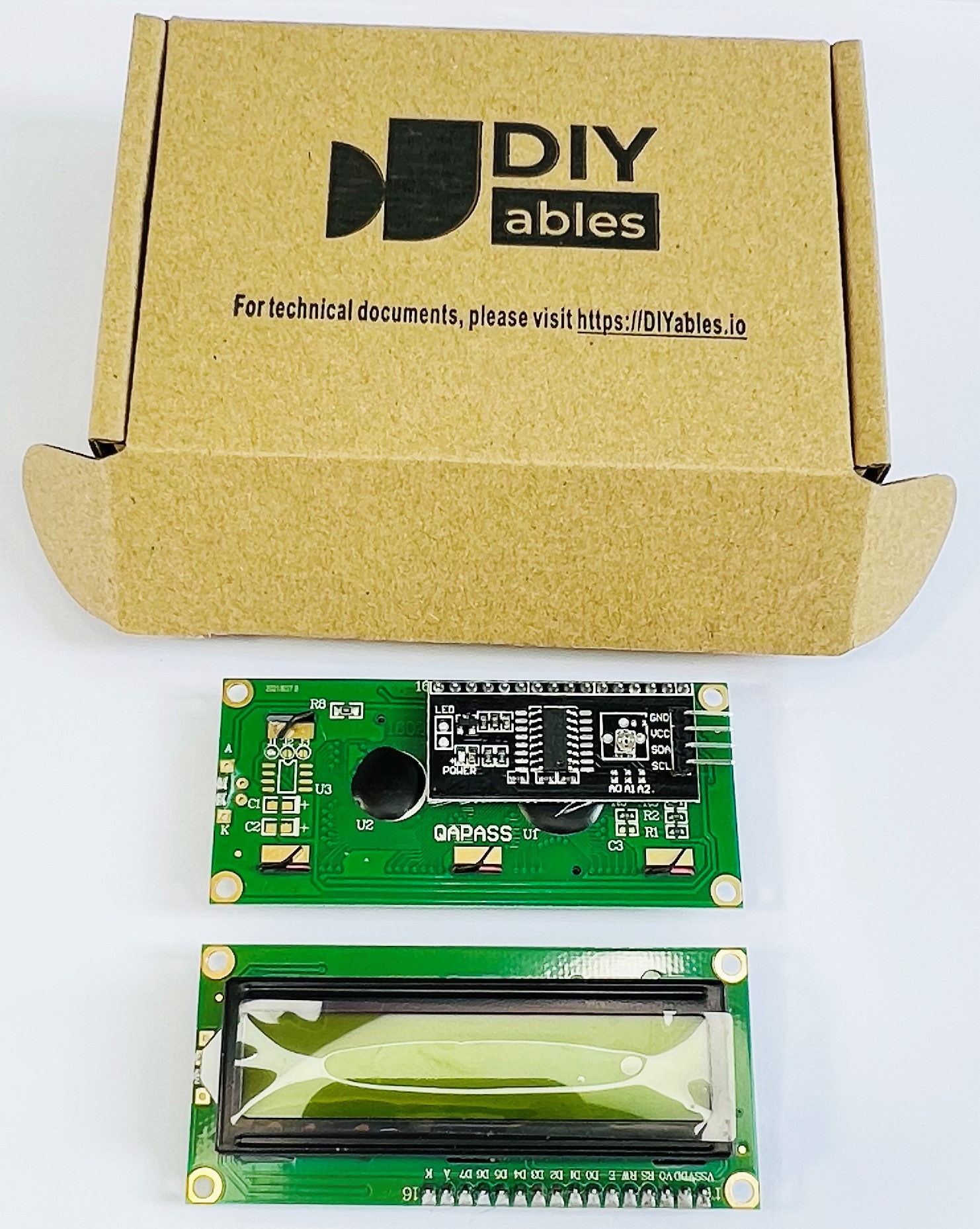
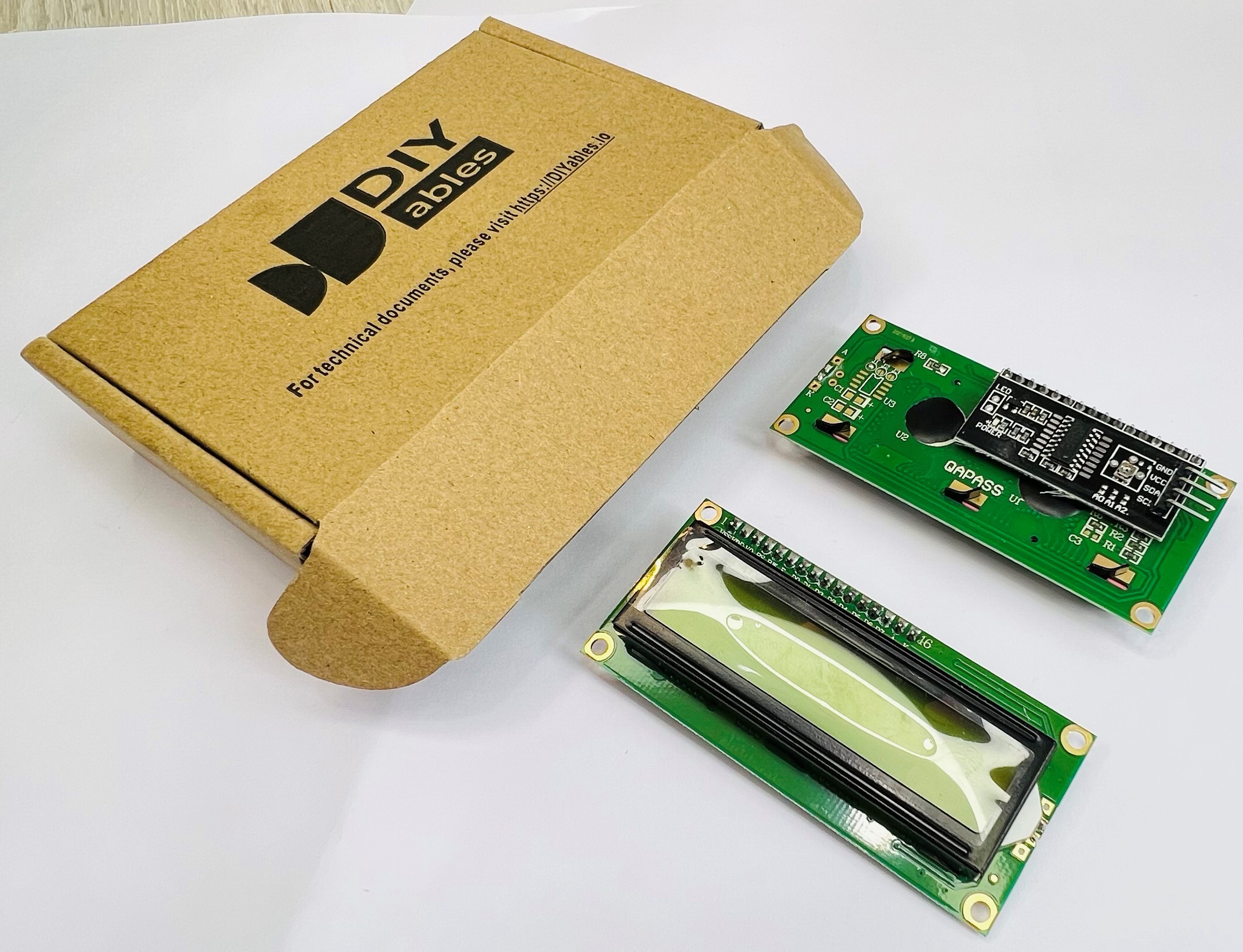
Quick Overview
This is 2 pieces of LCD I2C 1602 modules that work with Arduino, ESP32, ESP8266, Raspberry Pi, or any 5V or 3.3V microcontroller.
Key Features
- LCD with I2C interface (4 wires)
- LCD 16x2 (16 columns 2 rows ⇒ two lines, 16 characters per line)
- Adjustable contrast via a built-in potentiometer
- Backlight can be turned on/off programmably
- Works with Arduino, ESP32, ESP8266, Raspberry Pi
- Dimension: 78mm x 34mm x 13mm (L x W x H).
- Power supply: +5V
- I2C address: 0x27
INTERFACE
- VCC pin: the power supply for the LCD, connect this pin to VCC (5V).
- GND pin: connect this pin to GND (0V).
- SCL pin: I2C clock signal pin, connect this pin to SCL of microcontroller
- SDA pin: I2C data signal pin, connect this pin to SDA of microcontroller
Tutorials
Arduino Example Code
Arduino Example Code - backlight disabled
/*
* This code is created by DIYables.io
* This code is released in the public domain
* For more detail, visit https://diyables.io/products/lcd-i2c-16x2
*/
#include <LiquidCrystal_I2C.h>
LiquidCrystal_I2C lcd(0x27, 16, 2); // I2C address 0x27, 16 column and 2 rows
void setup() {
lcd.init(); // initialize the lcd
//lcd.backlight();
lcd.setCursor(3, 0); // move cursor to (3, 0)
lcd.print("DIYables"); // print message at (3, 0)
lcd.setCursor(0, 1); // move cursor to (0, 1)
lcd.print("www.diyables.io"); // print message at (0, 1)
}
void loop() {
}
Arduino Example Code - backlight enabled
/*
* This code is created by DIYables.io
* This code is released in the public domain
* For more detail, visit https://diyables.io/products/lcd-i2c-16x2
*/
#include <LiquidCrystal_I2C.h>
LiquidCrystal_I2C lcd(0x27, 16, 2); // I2C address 0x27, 16 column and 2 rows
void setup() {
lcd.init(); // initialize the lcd
lcd.backlight();
lcd.setCursor(3, 0); // move cursor to (3, 0)
lcd.print("DIYables"); // print message at (3, 0)
lcd.setCursor(0, 1); // move cursor to (0, 1)
lcd.print("www.diyables.io"); // print message at (0, 1)
}
void loop() {
}

